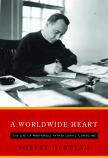Missionary Witness
During the middle decades of the 20th century, one of the best known Maryknoll priests in the United States was John J. Considine, who was widely admired for his books, lectures and editorial supervision of Maryknoll’s superlative mission magazine, The Field Afar. In 1963, Maryknoll’s superior, Bishop Raymond Lane, told the cardinal prefect of the Congregation for the Propagation of the Faith that “Considine has done more...to educate Catholics to the mission idea than any other priest in America.” Professor Kenneth Scott Latourette, a devout Baptist and renowned professor of Christian missions at Yale Divinity School, agreed. “Few if any of his generation have made greater contribution to the foreign missions of the American branch of his church,” said Latourette. Considine’s achievement was all the more remarkable because in his 59 years as a Maryknoll priest, he never spent a day abroad as a missionary.
Considine joined the fledgling Catholic Foreign Mission Society of America (Maryknoll) only four years after its founding in 1911. His superiors quickly recognized his intellectual and organizational talents and sent him to The Catholic University of America for a graduate degree. He spent the next 10 years in Rome, where he made a major contribution to the missionary work of the church by establishing Fides International Service, a press service for the Congregation for the Propagation of the Faith, which enlisted the services of some 300 missionaries throughout the world.
As a young priest in Rome in the 1920s, during the obscurantist backlash that followed the Modernist crisis, Considine showed considerable courage by presenting a sympathetic image of non-Christian religions in the press releases of Fides. He was also quick to recognize and champion the positive role that anthropology and ethnology could play in enhancing the effectiveness of the missionary apostolate of the church. Considine displayed prudence and finesse as well as courage. “My program,” he told Father James A. Walsh, the co-founder of Maryknoll, “consists mainly for the next few months in convincing everybody of my conservatism and doing everything that is not conservative under cover.”
Considine interrupted his decade in Rome in 1931–34 to make a 14-month trip to Asia, the Middle East and Central Africa, returning to Rome overland across the Sahara through present-day Mali. He estimated that he covered 52,000 miles on this trip. These “mission study tours” became an integral part of his ministry. Four more trips were to follow, a second visit to Asia and Africa in 1953 and three trips to Latin America in 1945, 1954 and 1955. Each trip produced a book (one of them a best-seller) or at least a series of articles on the missions.
Upon his return to Maryknoll headquarters in Ossining, N.Y., in 1934, Considine devoted his energies to fund-raising and public relations in addition to editing The Field Afar from 1936 to 1960. He also welcomed the opportunity to collaborate with the Jesuit anthropologist J. Franklin Ewing, who had established the Institute of Mission Studies at Fordham University.
A new career opened for Considine in 1960 when the U.S. bishops invited him to become the director of the recently established Latin American Bureau of the National Catholic Welfare Conference. During the eight years of Considine’s leadership of L.A.B. he built it from scratch, says his biographer Robert Hurteau. The number of American missionaries in Latin America doubled, despite the fact that the whole enterprise enjoyed only limited support from the U.S. bishops.
Considine’s involvement with Latin America also brought him into conflict with the Rev. Ivan Illich, a brilliant but prickly Yugoslav-born priest of the Archdiocese of New York, whose views on evangelization in Latin America were considerably more unconventional than those of Considine. Illich seemed to regard L.A.B. as a form of Yankee imperialism. In 1966 Considine resigned from the board of Illich’s Center of Intercultural Formation in Cuernavaca, Mexico. The following year, without mentioning Considine by name, Illich criticized the work of L.A.B. in a provocative article in America entitled “The Seamy Side of Charity” (1/21/67).
It has been said that church history is largely the story of the quarrels of good people, and Hurteau views the conflict between Considine and Illich from this perspective, as the probably inevitable clash between a builder of institutions and a born iconoclast. Although Hurteau’s sympathies are with Considine, he is scrupulously fair in judging the motives and assessing the achievements of both men.
Hurteau, a former Maryknoll missioner in Peru and director of the Center for Religion and Spirituality at Marymount Loyola University in Los Angeles, has drawn upon a wide variety of unpublished sources, including Considine’s diaries and correspondence, Maryknoll and Vatican archives, and interviews with colleagues and friends of Considine, to produce this first full-length biography of Considine. It is a welcome and much needed addition to the corpus of works on the American Catholic foreign missions. It must be admitted, however, that the wide range of Considine’s interests and activities present a daunting challenge for even the most seasoned biographer to achieve a satisfying synthesis of his life and work. One of the strengths of Hurteau’s study is that he makes clear that Considine’s dedication to Maryknoll did not prevent him from making numerous and valuable contributions to the wider world of the whole missionary apostolate of the church. There are numerous illustrations, an appendix with excerpts from Considine’s writings and an extensive bibliography.
This article also appeared in print, under the headline “Missionary Witness,” in the February 3, 2014, issue.








